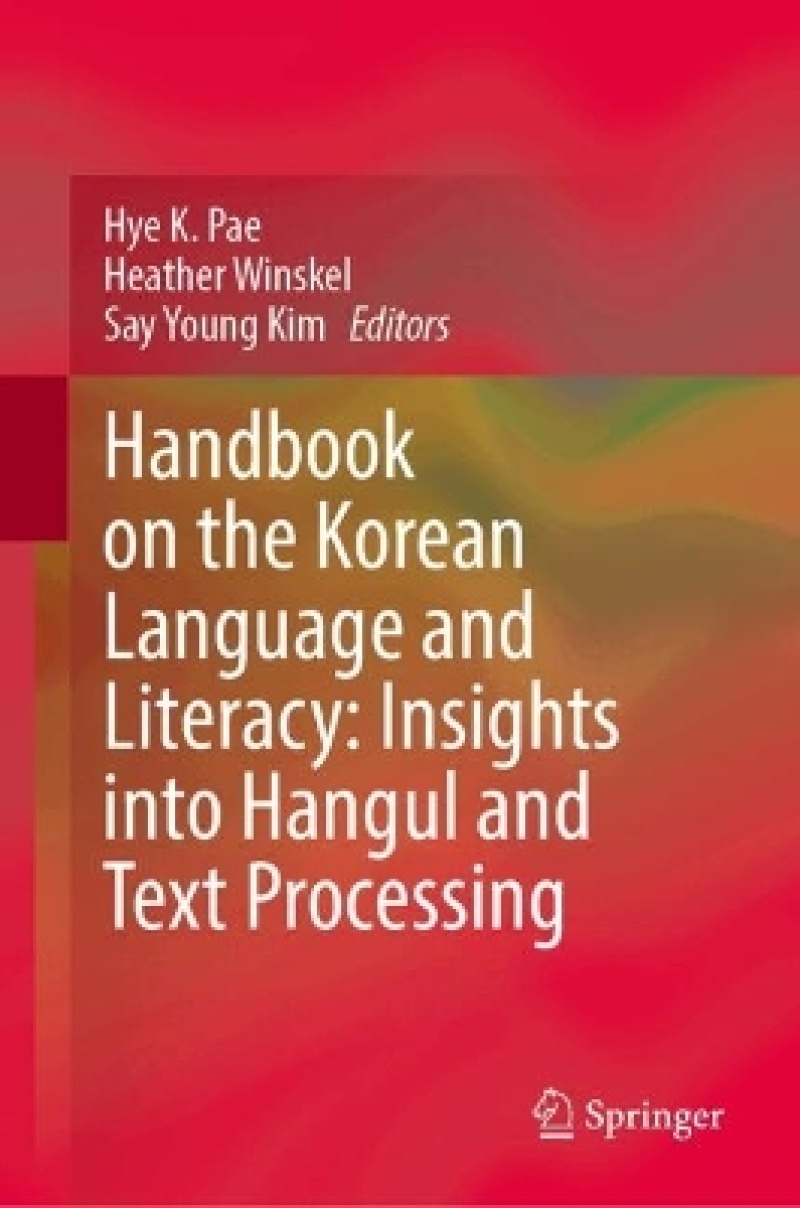This handbook offers comprehensive insights into the language-writing nexus of the Korean alphabet, Hangul. Recognized by international linguists and historians as the most scientifically designed and efficient script, Hangul's uniqueness lies in its effective integration of the alphabetic principle into syllabic blocks. The volume challenges the dominant Eurocentric research trend by extending the body of knowledge to include Korean. The Korean alphabet is uniquely different from the Chinese and Japanese writing systems and the Latin alphabet.
The state-of-the-art reflections on the Korean language, its alphabet, and its processing are organized into five parts, including (1) spoken language and written language, (2) processing at the lexical level, (3) processing at the sentential level, (4) acquisition of Korean as L1 and L2, and (5) future directions in theory, methodology, pedagogy, and more. The volume is written by leading Korean and non-Korean specialists in relevant fields across the world. It discusses Hangul-specific theories, script-specific empirical evidence, and syllable-based pedagogical practices. With the current Korean cultural wave (a.k.a., Hallyu; e.g., K-pop, K-dramas, K-movies, etc.) spreading across the world, this Handbook is timely and serves as a signpost to future research and practice. This collection of chapters serves as an authoritative vade mecum, offering scientifically grounded discussions on the complex mechanisms involved in reading and text processing while remaining accessible to students, researchers, practitioners, and policymakers.
Introduction to the Volume.- Hangul's Role in Interdisciplinary Cognitive Science: Insights from Language and Psycholinguistics.- Hangul as a Sound Representational SystemHangul as a Sound Representational System.- From Oligoliteracy to Literacy for ALL: Korean Writing System as the Catalyst for Equity and Social Justice.- Is the Initial Letter Advantage Script-Universal? The Utility of Onset Letters in Lexical Decision of Korean Hangul.- Word Formation and Cognitive Discrepancy in Reading in North and South Korean.- The Effect of L1-Derived Syllabified Representations on Lexical Decision in L2 English among Native Speakers of Korean.- Neurocognitive Mechanisms of Lexical Access in Korean.- Individual differences in Korean word recognition during reading.- TBD.- Effects of Script on Sentential Processing in Korean.- Lexical Activation of Parafoveal Words in Korean.- Large Language Models Can Participate in Psycholinguistic Testing in Korean.- Sentence processing in Korean.- Cultivating Literacy: Insights from Korean Reading and Writing Instruction Studies.- Intervention Effects of Copy and Cover-Copy-Compare Strategies on Korean Spelling in Korean Poor Spellers with ADHD.- The Relative Efficacy of Explicit and Implicit Instruction on Hangul Reading among Beginning L2 Learners.- Lexical and Morphological Knowledge of Korean Verbs in Reading.- Easy Decoding yet Difficult Encoding: What Does the Asymmetry between Reading and Writing in Korean Hangul Mean for Grapholinguistics.- A Creative Research Practice Inspired by the Korean Alphabet Hangul.
This handbook offers comprehensive insights into the language-writing nexus of the Korean alphabet, Hangul. Recognized by international linguists and historians as the most scientifically designed and efficient script, Hangul's uniqueness lies in its effective integration of the alphabetic principle into syllabic blocks. The volume challenges the dominant Eurocentric research trend by extending the body of knowledge to include Korean. The Korean alphabet is uniquely different from the Chinese and Japanese writing systems and the Latin alphabet.
The state-of-the-art reflections on the Korean language, its alphabet, and its processing are organized into five parts, including (1) spoken language and written language, (2) processing at the lexical level, (3) processing at the sentential level, (4) acquisition of Korean as L1 and L2, and (5) future directions in theory, methodology, pedagogy, and more. The volume is written by leading Korean and non-Korean specialists in relevant fields across the world. It discusses Hangul-specific theories, script-specific empirical evidence, and syllable-based pedagogical practices. With the current Korean cultural wave (a.k.a., Hallyu; e.g., K-pop, K-dramas, K-movies, etc.) spreading across the world, this Handbook is timely and serves as a signpost to future research and practice. This collection of chapters serves as an authoritative vade mecum, offering scientifically grounded discussions on the complex mechanisms involved in reading and text processing while remaining accessible to students, researchers, practitioners, and policymakers.
Produktdetaljer
Om bidragsyterne
Hye K. Pae, Ph.D., is a Professor of applied linguistics and psycholinguistics at the University of Cincinnati, USA. She has been a lead author of numerous articles, two single-authored books (both with Springer), and a single-edited book (with John Benjamins). She has served as an editorial board member for several international journals. She is currently working as key personnel on two multi-million five-year grant projects funded by the US Department of Education.
Heather Winskel, Ph. D., is an Associate Professor of Psychology at James Cook University Singapore. She has been the lead author of numerous articles, book chapters, and an edited book on psycholinguistics (with CUP). She has also reviewed numerous articles for international journals and grant applications for various funding bodies.
Say Young Kim, Ph.D., is a Professor of Experimental Linguistics at Hanyang University, Seoul, South Korea. He has published articles in the fields of psycholinguistics and neurolinguistics in various journals, including Brain and Language, Language, Cognition and Neuroscience, Bilingualism: Language and Cognition, Journal of Neurolinguistics, and Behavior Research Methods. He has served as an editorial board member for Frontiers in Psychology: Cognitive Science and Korean Journal of Applied Linguistics. He has actively reviewed numerous articles for international journals and grant applications for the National Research Foundation of Korea.

